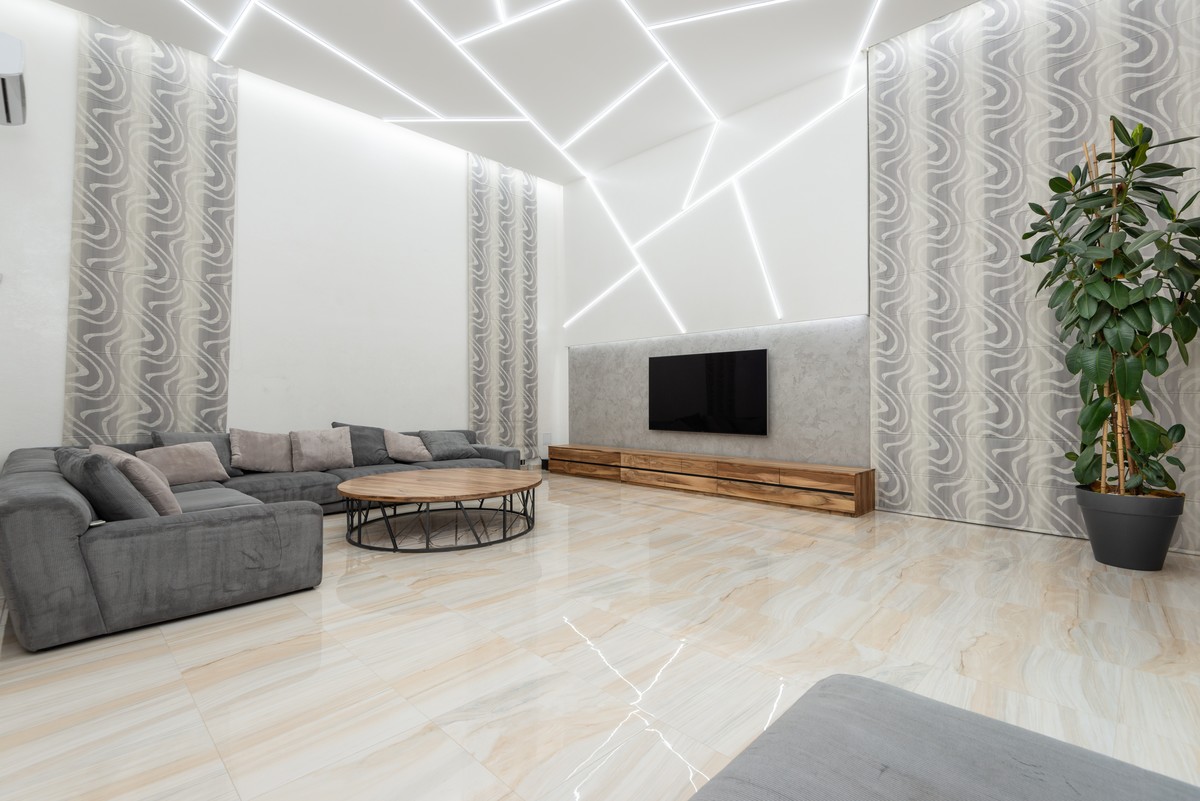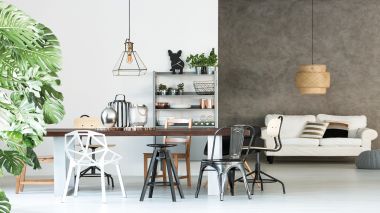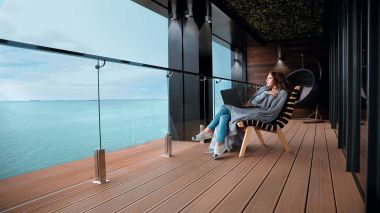Can you configure a set of LED strips by yourself? Yes, but keep these 3 things in mind
LED strips have quickly conquered the market because they can be mounted almost anywhere and their installation is very simple. You can see them in all sorts of places – above kitchen worktops, under furniture, behind the edge of the TV and even between tiles in the bathroom. What do you need to bear in mind during installation to enjoy the unique lighting effect provided by LED strips for a long time? Keep reading.

The installation itself is as simple as playing with building blocks, as most strips have a self-adhesive strip on the back, and you can connect almost all the components without tools. If you want to mount the LED strip in a profile then simply clean and degrease it. Then, you have to peel off the protective paper and stick the LED strip on. Is that all? No – it's almost the finale, which is well worth preparing for. What should you start with?
1. The selection of the degree of waterproofing, colour of light and type of strip
Is that obvious? As it turns out – not for everyone. If you decide to install LED strips, it is essential to choose the right model, accessories and profiles. Also, plan the appropriate installation location – depending on whether the LED strips are to act as main or accent lighting. It is not that simple, but we have prepared a tool to help you with this: LED strip configurator. It will guide you step by step through the selection of the components for your installation.
Using it you will pay attention to such things as:
• the degree of waterproofing depending on the installation location (in the kitchen or bathroom, where the lighting will be affected by steam, choose products with IP44 rating or higher),
• the right colour and intensity of light,
• the type of control for your lighting (remote control or switch),
• the type of strip (12V or 24V) depending on the length of the installation and the type of power supply, as well as other necessary installation components.
2. Profile? A must!
Why should LED strips be mounted in profiles?
There are several reasons: Firstly, good profiles for LED strips are made of aluminium, which conducts and dissipates heat perfectly. In this way, it acts as a heat sink for the installation housed in it, preventing it from overheating and ensuring long-lasting use. Secondly, profile-protected LED strips last much longer than unprotected LED strips which are exposed to external factors. This is particularly important if they illuminate the kitchen or bathroom, i.e. rooms with higher levels of moisture in the air.
A third argument in favour of the use of profiles is that they are in themselves an attractive part of decorative and lighting arrangements. The light diffused by the milky or transparent plastic pane creates an elegant visual effect in addition to the caps on the two ends of the profile protect the strip from dust penetration. The profiles are easy to install thanks to the mounting brackets mounted using screws. Of course, there are different types of profiles, but we have a little tip for you on how to choose the right profile for your chosen LED strip. Of course, we are talking about our configurator. Once you have selected the type of profile, it will suggest the ones that will perfectly match your chosen strip.
You will also be interested in: 5 tips on how to plan lighting arrangement for a small flat?
3. High-quality essential accessories
Strips, profiles, and you're all set.... well, almost. It is very important to get good quality accessories, i.e.
• the controller and remote control – they are essential elements of the system which allow you to control the LED strip. With these, you can control light intensity, colour temperature or colour (depending on the capabilities of the selected strip),
• power supply – essential for the operation of the LED strip installation, changes the line voltage to the lower voltage (12V or 24V) needed for the correct functioning of your new lighting.
Does it seem difficult to you? Not everyone is familiar with selecting power supplies or controllers, but.... yes, our LED strip configurator will come to your aid again. It analyses your choices and suggests the right controller and remote control or light switch mounted in a convenient location. Finally, the configurator will suggest mounting accessories: profile caps, mounting brackets and whatever else is necessary for proper installation.
Now all you have to do is print out the shopping list and ... well, remember if you have no experience with working with electricity, then don't take any risks. Leave the connection of the power supply to the mains to a professional or a friend who is a professional, because your safety comes first.
Read also: 4 reasons to choose lighting with light intensity and colour adjustment options
LED strips have been popular for years, but if someone does not have basic knowledge of them, they will often think it is very difficult to install them, but on the contrary – it is too easy. We hope that our tips will be helpful and that you will be able to design your own LED strip lighting installation. Remember that if you have any questions or problems, you can use our LED strip configurator or simply ask Kanlux – via email, contact form or our social media channels. We are always very happy to help.
Other articles
 Smart lighting management in your home – where to start?
Smart lighting management in your home – where to start?
Smart lighting systems are not only a matter of convenience, but also a conscious step towards better...
 How does LED lighting work?
How does LED lighting work?
The LED lighting in our homes, offices and public areas is here to stay. Today, it is hard to imagine...
 How can lighting create a spa atmosphere in your bathroom?
How can lighting create a spa atmosphere in your bathroom?
When designing a bathroom, not only aesthetics but also lighting matter—when selected appropriately,...
 Ceiling lighting: pendant, ceiling-mounted, or spotlight – which one to choose?
Ceiling lighting: pendant, ceiling-mounted, or spotlight – which one to choose?
Ceiling lighting is not only a matter of aesthetics – it is a crucial element that influences both...
 Guide: How to choose light bulbs for different spaces?
Guide: How to choose light bulbs for different spaces?
Appropriate lighting is one of the most important elements of interior design, yet it is often underrated....
 IP Rating - how to choose lighting for the bathroom, surroundings, house facade and garden?
IP Rating - how to choose lighting for the bathroom, surroundings, house facade and garden?
What is an IP Rating? How to choose appropriate lighting for the bathroom, garden, or house facade? Discover...